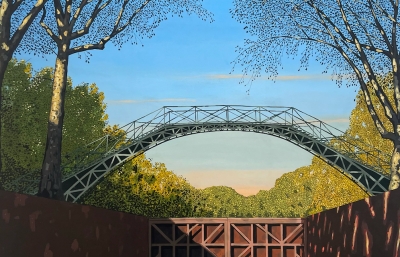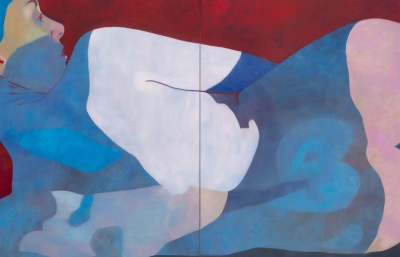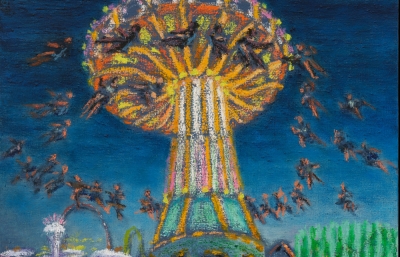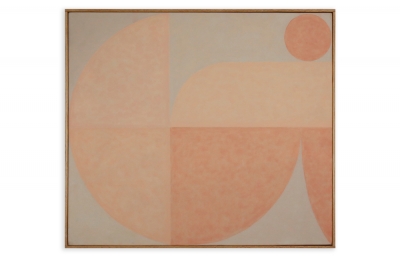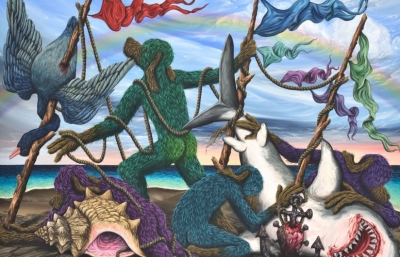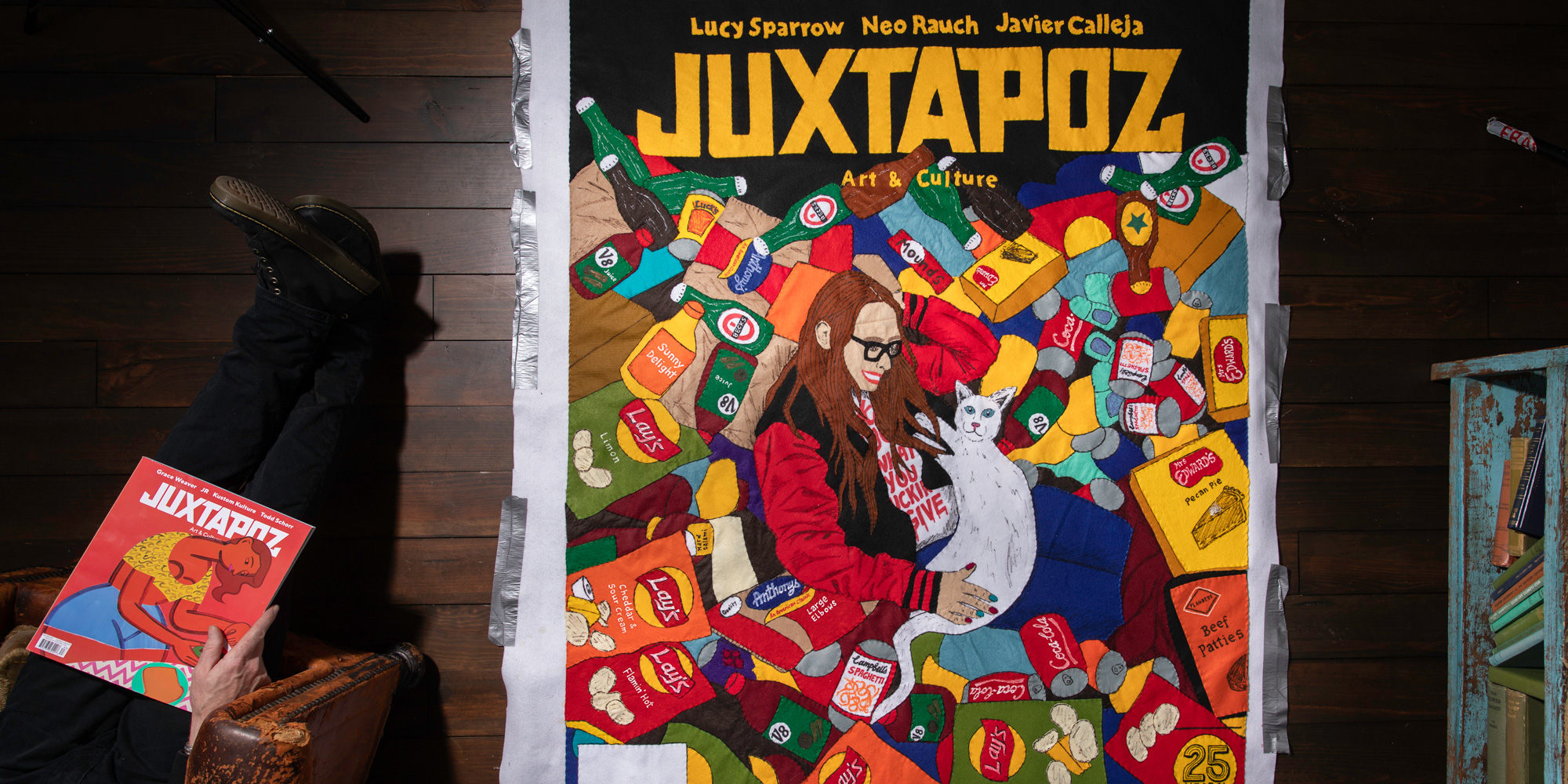
Lucy Sparrow
Living In A Material World
Interview by Gwynned Vitello // Portrait by Ian Cox
Jet-lagged and trudging through a covered mini-mall of more than 50 shades of gray, more catacomb than commercial, I discovered the store–or it discovered me. Colors and shapes roused my energy and appetite. That’s what happens in an encounter with Lucy Sparrow and one of her installations. The UK artist fashions felt and seems to insert a heartbeat into the everyday objects she curates into staged bodegas, sex shops and delis. Entering one of her shows is a trip to the theater, a textural tonic that infuses longing, nostalgia and camaraderie. Individually, each piece evokes memory. How splendid that her name is Lucy Sparrow, recalling the tiny bird that symbolizes joy and protection, simplicity and community. Our conversation began with an introduction to her cats (Aldous) Huxley and Buttercup (Princess Bride) as I roosted down with the sprightly Ms. Sparrow.
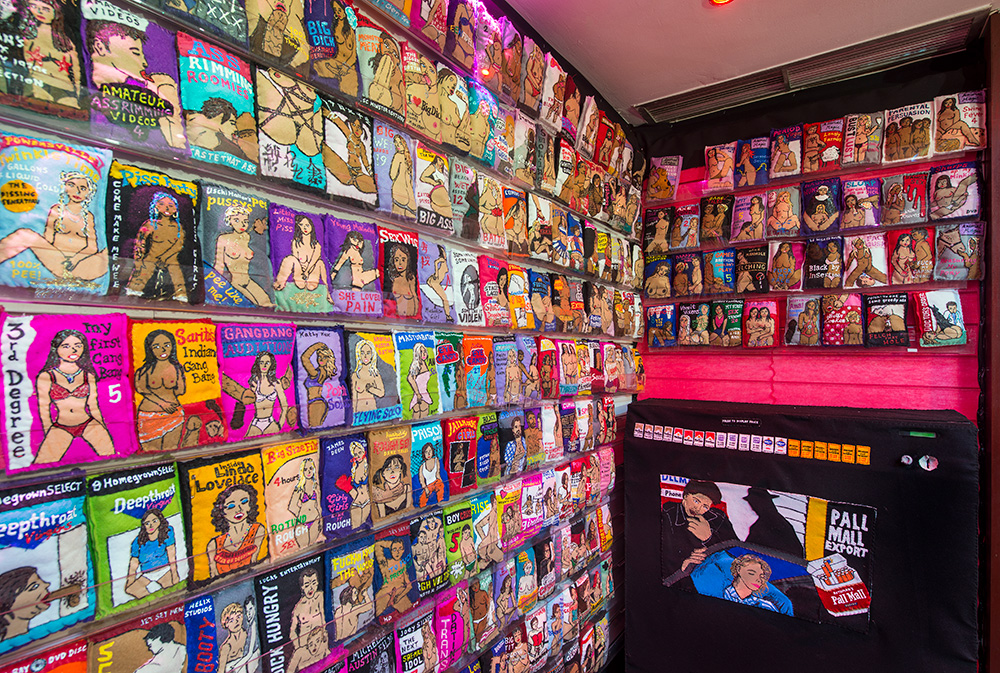
Gwynned Vitello: You wouldn’t be described as a performance artist, and I don’t think of your work as super-staged, but you personally are an actor in the experience.
Lucy Sparrow: I think there is definitely an element of that, though it was never meant to be that way. When I first started, it was never intentional. It was just that I had no one else to run the shop I made, so it was only me and my mother coming in to help on the weekend. A lot of people didn’t know it was me when I first started out. I was just someone behind the counter. I don’t get that as much anymore because I guess I’ve done enough of them that people, unfortunately, recognize me, so it’s not much of a surprise.
Your Mom! So she also had a part in the performance?
She works in a shop that sells kitchenware, that kind of thing. So she’s really good at customer service, and people thought she was really polite and nice. But yeah, she does have her real work to do, and I haven’t done a show in England for quite awhile. The last one here was a sex shop, so it was a little uncomfortable, though she did make all the condoms for the shop.
Speaking of sex and performance art, and I don’t think you’re at all uncomfortable about this, tell me how you view your former work as a stripper. I think of you as kind of a Spice Girl Stripper, along the lines of Sporty or Baby Spice, not a bored-looking stripper.
Oh totally. I was very chatty, and I didn’t look that much different, to be honest. I still wore my glasses. But yeah, I looked very nerdy, very alternative; though it was in Brighton, so everyone living there is quite alternative. I did it for five years and worked all over, in Bristol, London, and Manchester, as well. Wherever, at the time, the money was good, you’d travel. I used to take my sewing to work to while away the hours when no one was in, you know, and that’s what I would rather have been doing. I’d use the money I made from stripping to pay for fabric and materials.
Did you dream of being an artist as a young girl, and did you go to art school?
I knew that I loved art, and I had posters of art, as opposed to boy bands, on my bedroom walls growing up. I actually did go to university, and I went hoping it would be like scenes out of Fame, where everyone was doing music and dance and making masterpieces. But it was everyone wanting to go out and get drunk instead of being interested in art, so that was a bit heartbreaking.
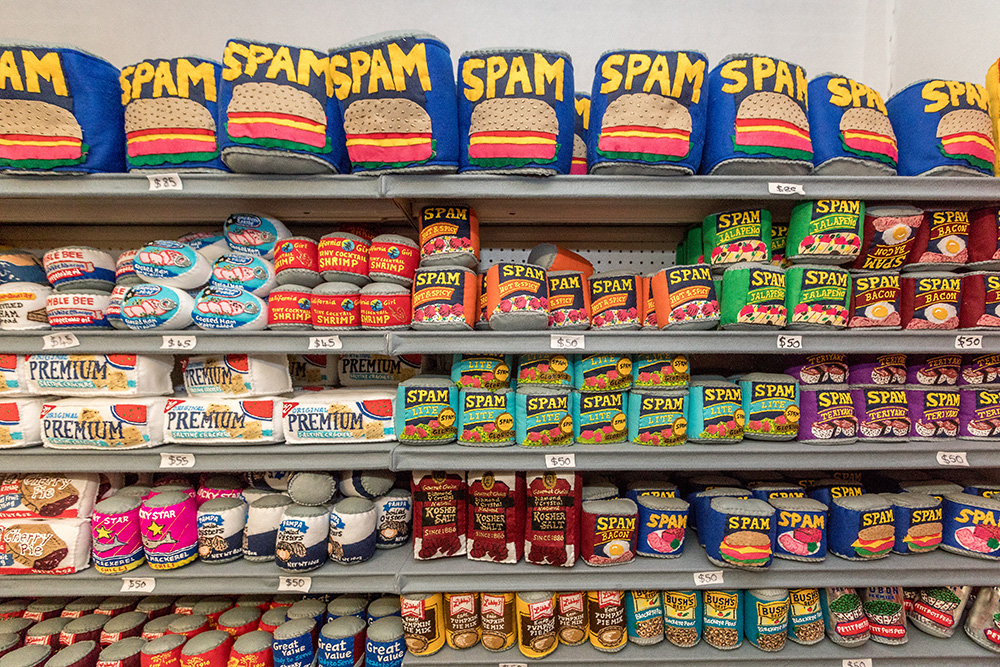
I wouldn’t have expected that either. I’d imagine everyone in art school being driven and passionate.
I think it can be an easy option that people go for, but I found the experience crushing. I sort of soon realized that it was a load of rubbish and that I didn’t need to go to university at all, so I dropped out and became a stripper.
Did you pursue art before school? Was it mainly sewing?
I was drawing, painting and sewing. If there was anything artistic, I would do it and my Mum would encourage me. She’s really arty, and my Dad does lots of writing, so there was support. I remember at the age of six, making this parachute completely out of sweets wrappers, and I thought it was just the best thing I could do to make this food and fashion kind of thing. I learned to sew when I was about four, and we also did it at school in a home economics class. I didn’t think of it then as art, never took it seriously, so I never thought people would end up buying it, let alone show it in galleries.
How did you eventually bust out?
I think the first time I showed my work to the public was in 2009 when I was in a group show with some other street artists, and it started in the strip club. This guy came in and was like, “What do you do?” I asked what he did, and he said he owned an art gallery. When I told him I was interested in art, he offered to put my work in a show, and I stripped for him.
Just like that. No agent, let’s say, very natural and organic. You were just hanging out with your artist friends.
I didn’t know anything about street art. I’d heard of Banksy, and I’d seen some street art, but I didn’t have any particular desire to be part of it, though things sort of worked out that way. The first show I did was pretty much on my own. I shared a studio with some of my friends in this run-down garage. My friend did crochet, and some other people did sets for festivals and stuff, but it was not at all professional.
So you didn’t have a master plan?
There was a master plan, but I honestly didn’t see it working out. It was, like, 10 years of getting nowhere and, you know, quite depressing not knowing how to get into the art world. I just didn’t know anything about how to go about it, and social media wasn’t big then. I never assumed that people would want to buy my stuff, and at that point, I was just making it for myself. But I do remember making people’s pets out of felt for 25 quid at a time because I was so broke!
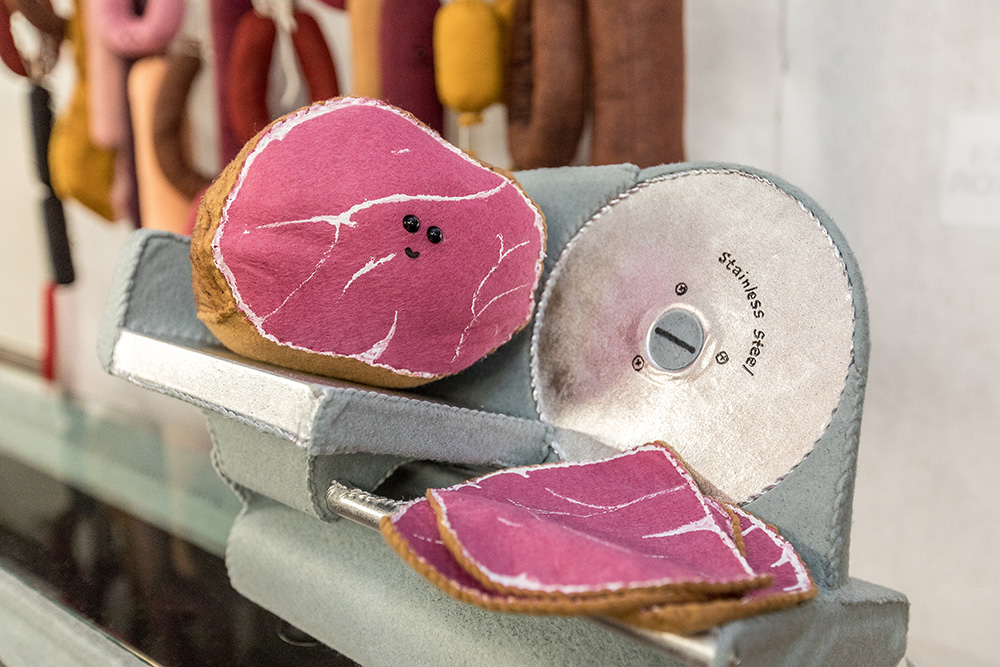
But London was calling, and eventually you got your big show.
I definitely felt the draw to London. I thought it was the epicenter and really didn’t even think beyond that. I was getting shows there, and my first big one did really well in 2014. That’s when I gave up work full-time and managed to go full-time as an artist. It literally happened overnight. Someone bought the entire show, and I remember phoning my Dad and saying, “Okay, this is actually happening. I don’t know what to do!” I genuinely did not know what to do
Well, it is the kind of work where someone might want the entire stock of items, but are you saying one person bought the entire show?
Yeah, and I didn’t even have a company. I suddenly went from earning like, maybe, 20 quid a week to 60 grand. I had worked for my friend Harry’s lampshade business and went to him to ask what to do. He said, “Start a company. Use my accountant. You need to start paying VAT. Suddenly I had to become a company director and hire a staff. I was selling stuff on the website, as well as at the show. I think I had 800 orders t0 fulfill, each with about 20 items
I’m glad you had your Mum and Harry! Fill us in that first show. It was The Cornershop, right?
It was a very small corner shop in east London. I had applied three times for Art Council money, and got it on the third try. I also did a Kickstarter campaign, and it went viral, so I took a load of photos and sent them off to a press agency because I read that’s what you do. It got syndicated around the world, and then I was on the phone talking to the BBC. And then China wanted to come and film it, as well. And I just thought, “My life has gotten very strange.”
Instead of taking an Art Business class, it was baptism by fire and you just learned as you went along. For that first show, in addition to hoping to sell things, what was the concept for your role?
I made myself an apron, and I painted a logo of the Cornershop on it. Besides, my parents didn’t know if anyone was going to turn up. When I opened the door, there’s this queue down the street, so my Mum and Dad were with me every night. We didn’t have any security, so we did this ”one in, one out” kind of thing; just my parents and me trying to run this art show. Then my boyfriend at the time came in to stock the shelves and hand out baskets and do crowd control. Yeah, it was mad.
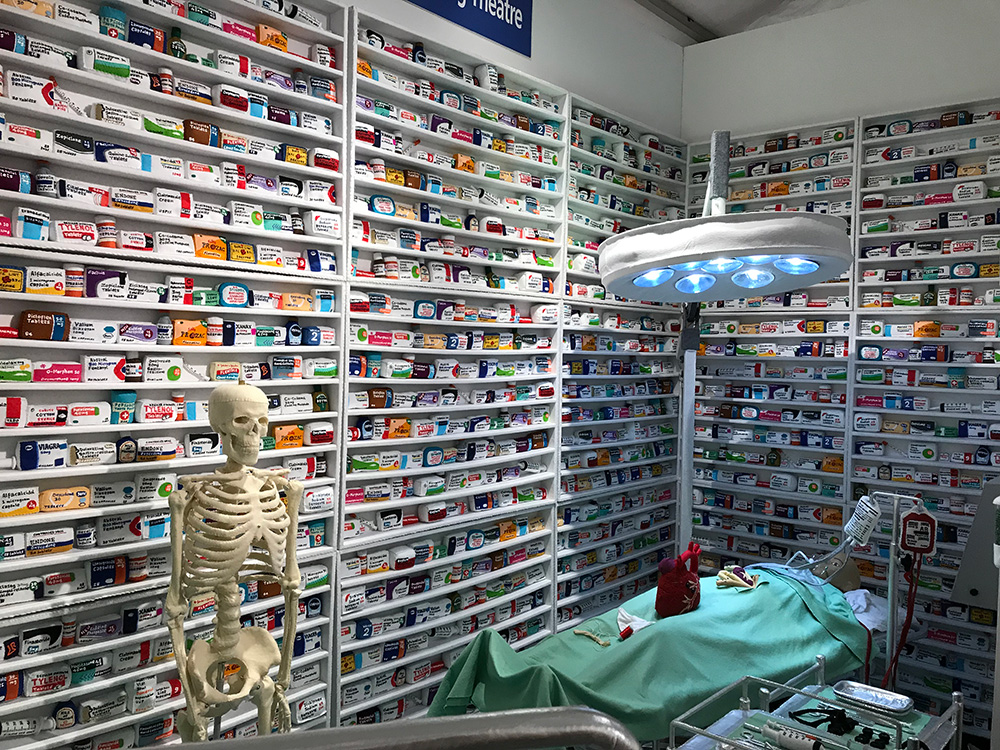
And you design uniforms for the staff for all the shows, right?
I try and get my agents to wear outfits and uniforms, but they never do! Maybe cuz I try to make them as embarrassing as possible, always crazy, vibrant colors. Designing the outfit is sometimes the funnest part of doing a show.
I saw the Miami show before the store actually opened. Were the items there in a typical sized space for your work, and do you have a kind of template for stocking the stores?
I think Miami was about one twentieth of what was in LA, which we had to close early because the shelves started to look too empty. We had three different aisles and was about 3000 square feet. It’s about no reds next to each other; no yellows next each other. As soon as a photo is taken, that’s how it’s got to stay, you know. Mostly I was using the logic of a normal supermarket, so a can of Spam would be next to a can of hot-dogs. I worked in a supermarket for over three years. There’s such an art to arranging the stuff. It made me so happy.
I saw lots of American and English products and wonder if you do foods from other countries.
I did a show in Montreal that had some Canadian foods, but unless they are private commissions, it’s generally UK or US. But I love foreign supermarkets and would love to do Tokyo. What you could do there would be mind-blowing, as would South Korea with its brightly colored packaging. And I definitely want t d a department store or a strip mall.
I know you’ve said you enjoy the health and beauty aisle, but personally, I really relate to the food.
I do like all the tiny medicines, the dental floss and toothbrushes, all the little things you need in life. I’ve done a gun shop, and the sex shop, of course, but it’s always the food that provokes the most reaction, the most happiness. You pick up a product, and you’re like, “Oh god, this is what my Mum used to make me; and you’re instantly 12 years old after school, and your Mum’s making you pasta. It such a strong emotion, and if art can produce that, then hopefully, I’ve done my job in the best possible way. I hope that’s what I achieve.
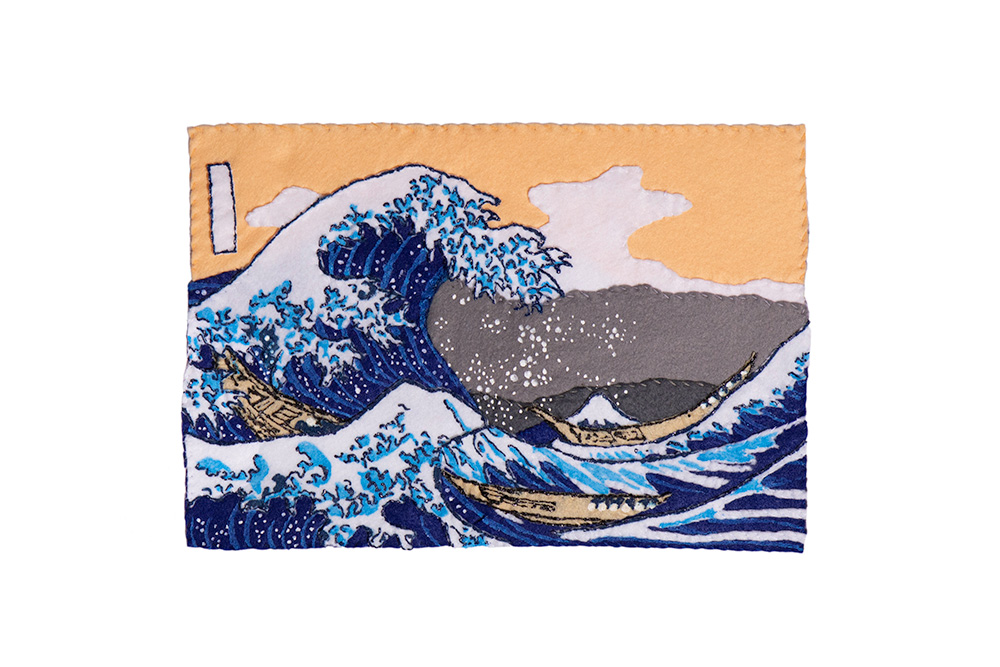
There is that beauty to your art, that its familiarity encourages thought about color, touch and emotion in a welcoming way.
I remember going to galleries when I was really struggling. I was making stuff, but it was falling on deaf ears. I’d go round to galleries and cold call, but get laughed out the building and it was just crushing. Because you know, there’s not a lesser meaning to this. It’s not a crime for something to elicit an emotional response. Sometimes I think the art world defines itself as only one thing or another, trivial or high end, where you’re not allowed to understand it unless you’ve been to university, you know?
I have a vision of this joyous process as you come up with ideas that you execute with a bunch of friends.
My assistant and I will cut everything out, and I employ seven ladies from my village. It’s tiny here, like one shop. /but I like it that way. I’m quite reclusive. I have one assistant here, and my friend Gemma comes up. Were all kind of misfits, and there are a lot of cats everywhere. We listen to true crime, and yeah, we’re all a bit weird. When anyone joins the company, I say, “You have to wear pajamas to work. And everyone does.”
Yes, but you’re going to have to leave your village in awhile for your trip to China!
So I’m doing a fake museum! It’s like the history of art in felt. There’s this non-profit museum in Beijing called M Woods, and we’ve been in talks for a year. I thought I could do a big Chinese supermarket, but then thought I’d like to branch out a little more. So I’m making all these famous artworks: Van Gogh, Botticelli, Michelangelo, Lichtenstein, Mondrian, Monet, Koons and today I worked on Barbara Kruger.
As with your products, will you be working in real scale?
Yes, 77 replicas of the art set to open June 1 and tour six different cities in China. The Kruger is 284 by 284 centimeters. [Editor’s note for the US reader: That is over nine feet.]
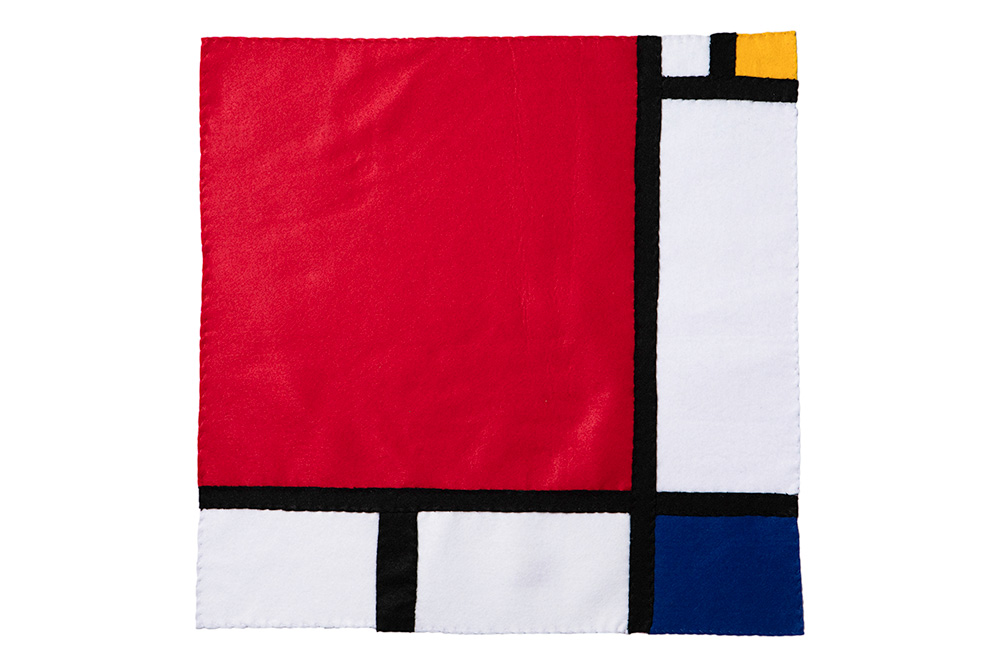
Aren’t you freaking out about getting this done?
I’m terrified, but I made Sparrow Mart I six months. The Barbara Kruger was made in two days, so I do work quickly. There are about three months to do the flat work and two months to do the sculptures. It’s going to be really tight and I’m flying by the seat of my pants. I honestly didn’t think I had the balls to do the Masters, but actually it hasn’t been too bad. They could end up looking awful, but maybe I’ll get away with it! I’ve sort of done fake art before.
Not any more than Warhol’s approach, you shouldn’t call it fake art.
Ha! Fake art, fake life. That’s our life now.
I knew you wouldn’t restrict yourself to supermarket products.
I want to show a range of what I can do. Food, obviously, has been really successful, but essentially, I want to show every aspect. I’d like to make an entire home that’s like a hoarder’s house all made of felt. I might make a replica of my house where each room will have a different decade. I want to start doing big, flat tapestries with storyboards and all. There are just so many things.
In the meantime, you’re enjoying your new home.
I’m loving it. I’ve never owned a home before, and now I have somewhere to live permanently. I’m designing it in the most crazy way so that the living room will be Victorian curiosities with taxidermy, a 50’s pink and lime green kitchen and a fast-food themed bedroom. I’ve got a circular bed that’s actually being made into a hamburger so that when you climb onto the meat patty, underneath will be the lettuce and the buns on top.
it’s definitely your mission to make, and to make people happy.
Yeah, essentially my goal is to create events and pieces of art that people will remember forever. And I mean pieces of art as in the whole installation. I hope that a kid who went to Sparrow Mart with their family will remember it in 20 years time. I remember going to see the Sensation show at the Saatchi Gallery when I was 11, and it blew my mind as to what art could be. It just changed how I viewed everything, My Mum took me, and I’ll never forget it. I even remember what we had for lunch that day.
Lucy Sparrow’s next exhibition will open at M Woods in Beijing, China.

